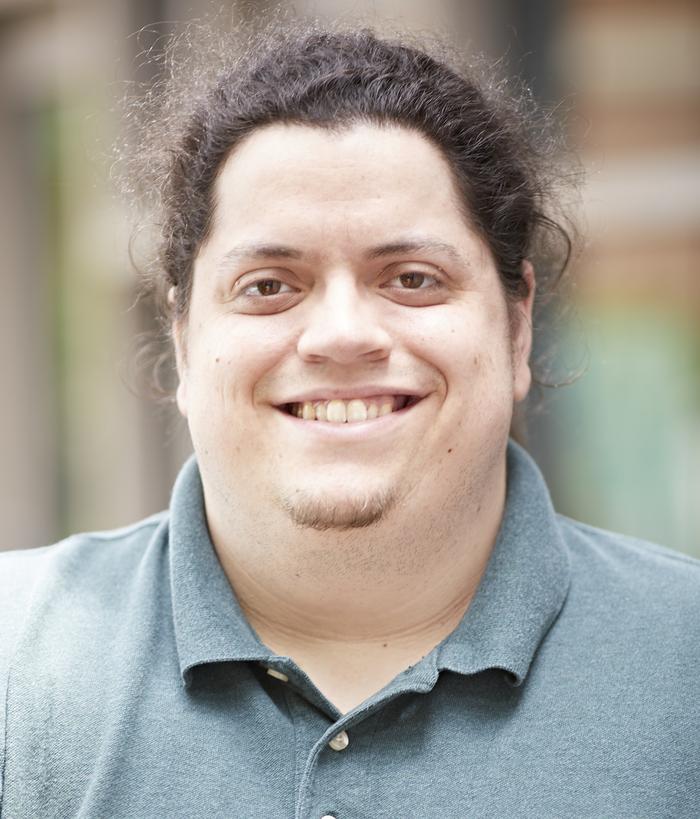New App Can Reveal Unintentional Mutations of a CRISPR Edit

A team of scientists from ChristianaCare's Gene Editing Institute in Delaware, US have developed a new customisable app that they say will make it much easier to find out what happened during a CRISPR experiment.
The app, called Deconvolution of Complex DNA Repair — or DECODR for short — can take in the results of a Sanger sequencing, or a readout of the DNA strands post-CRISPR edit, and deconvolute them to tell researchers exactly what changed, according to a new study published Thursday in The CRISPR Journal.DECODR can offer more specific and precise information than similar tools and is both cheaper and more user-friendly than the complicated, sometimes even manual processes already out there. DECODR potentially make gene-editing research much more precise and, even more importantly, accessible to more people than ever before.
The team never intended to develop and market an app. Instead, DECODR's algorithm was born from their need for a quick and easy way to tell what was going on during their own research, which uses CRISPR edits to make lung cancer less resistant to chemotherapy, explains Dr Eric Kmiec, the founder and director of the Gene Editing Institute and one of the scientists behind DECODR.
»We needed a tool that solved our problem of really detailing not only that a gene had been knocked out [after a CRISPR experiment], but how the gene had been knocked out and what the problem was. We needed this tool,« says Dr Kmiec.
Errors can be common
The fact of the matter is that gene editing can be messy, no matter how much scientists wish it was a perfectly precise artform. Recently, scientists have found growing evidence CRISPR doesn't affect all cells equally during an experiment. The resulting edits can be wildly disparate from one another within a sample of target cells and especially across multiple human participants. In theory, that could become a safety issue as gene therapies enter the realm of clinical relevancy.
»It is the unpredictability and diversity of edited outcomes within a population of cells that have raised caution as CRISPR-directed gene-editing programs advance toward clinical application,« the researchers write in their new paper.
In fact, Dr Kmiec published research in Nature Communications Biologyin late 2019 showing that there can be a wide variety of outcomes from a single CRISPR-Cas experiment. Errors can be common, and CRISPR may not always make the exact same cut at the exact same location, instead of making subtle changes outside of and around the actual targeted cut site.
»We all want CRISPR to be exactly precise and give us the same answer every time. It simply doesn't,« says Kmiec.
»What we have found through our own work is primarily that the different people who have received CRISPR derived treatments are just genetically different,« he adds.
Existing software is not precise enough
The app itself was primarily built out by Kevin Bloh, a PhD candidate at the Gene Editing Institute, and, amazingly, a high school-aged intern named Rohan Kanchana. Bloh explains that differences, both in terms of patient response to CRISPR and the variety among individual cells and genes, make Sanger sequencing data extremely difficult to read. That's because all of the different DNA strands from the thousands to millions of cells targeted in an experiment, with their slightly different edits and sequences, basically pile up on each other and convolute the data.
»It honestly looks like a mess,« Bloh says.
»It's a fragment of DNA where all of these sequences that exist in the population are overlaid on top of each other. It's very difficult to read what the changes in the DNA you're looking at are. You can tell there are changes, but it's hard to tell specifically what they are,« he adds.
Traditionally, scientists have three options for deconvolution: Do it slowly by hand, use an existing algorithm that might do a slapdash job, or use costly equipment.
That's where DECODR comes in — after years of work, Bloh and Kmiec say the app's algorithm can rapidly and cost-effectively deconvolute Sanger sequence data to a more precise extent than anything else available to researchers.
Other companies built similar tools, Bloh concedes. There's ICE, an analysis tool developed by Synthego, as well as TIDE, which was created by the Netherlands Cancer Institute. But neither, Bloh and Kmiec say, were precise enough for the work they were doing in the lab.
The app itself, Bloh says, was designed to help make daunting gene-editing research more user-friendly.
»Everything is drag and drop,« Bloh says.

Users feed in the Sanger sequence of their edited DNA, the sequence of their CRISPR guide RNAs, and the wild type DNA sequence. Then they specify whether they're analysing a bulk or clonal sample, and the algorithm handles the actual work of data deconvolution. The app mainly caters to CRISPR edits, but it can handle other forms of gene editing, like base editing, as needed.
In the end, DECODR will tell researchers the specifics of their intended edit and whether their gene-editing machinery caused any unintended changes to the genetic code — as long as those changes happened within the stretch of DNA picked up in the Sanger sequencing.
Free for high schools and community colleges
Making that process as streamlined as possible serves a dual purpose: To make things easier for research scientists in established labs, certainly, but also to help bring those who might otherwise never participate in research into the fray.
The Gene Editing Institute is giving DECODR out for free to high schools and community colleges, especially in underserved areas, as part of its science outreach and education mission.
»We work specifically with African-American kids in high school who have not had the opportunities we have had. And we think that DECODR might be the tool that brings them into the gene-editing world,« says Kmiec.
Kmiec adds that DECODR, as one aspect of the Gene Editing Institute's public outreach programs, could help both democratise scientific research and restore trust in the American biomedical and healthcare industries — especially among racial minorities that have historically been overlooked or abused by it.
Accessible CRISPR tools like DECODR, Kmiec says, could give underserved groups the »opportunity to engage in frontline research while at the same time engaging the communities in which they work, grow, and go to school in order to build more trust. That way, breakthrough technologies aren't thrust upon them — they take part in developing them.«
By contrast, the Gene Editing Institute sells and licenses the premium version of DECODR — which is no more powerful than the free one, to be clear — to research labs and universities conducting their own gene-editing experiments.
When a lab reaches out, Bloh and his team work to customise DECODR and its versatile algorithm to their exact needs — specifically tailoring the app to the kinds of experiments those researchers are running.
»We've honed the algorithm down to precisely what it needs to be. A lot of the functionality updates and things that we're adding would be tailored to specific needs. As it is right now, it's a stand-alone baseline tool,« Bloh says.
Those changes might mean customising DECODR to work with base editing in a more straightforward way or to deconvolute the data from experiments run on vast quantities of cells at a time, for example.
Analytical tools needed for clinical applications
For now, and at least until the FDA says otherwise, Kmiec recommends DECODR for non-clinical research purposes. But that's a matter of regulatory approval and professional caution, he explains, rather than any actual limitation with the DECODR algorithm.
»I don't want to say that it can't be used [clinically]. We like to err on a very conservative framing. We have not used this on a clinical trial basis yet, so we don’t want to recommend that. But if people want to license it and use it, well, it's not about a technical limitation. There's no reason it can't be used. In fact, it should be — and it should work very well,« Kmiec says.
The FDA hasn't signed off on using DECODR yet, and certainly not on using it alone. But Kmiec can envision a future where DECODR becomes one of several tools — including RNA-Seq and Novaseek— that could be used in concert in order to spot these unintended CRISPR edits and to get the most accurate understanding of the data possible.
»The issue is DECODR, by itself, is not good enough [for clinical use]. Novaseek by itself is not good enough, RNA-Seq by itself is not good enough. But the three of them together hold a lot of weight. No one tool shows the full effect of these mutagenic profiles — these footprints left by CRISPR,« says Kmiec.
»It should be part of the basket of analytical tools, but there's no technique that can currently stand alone,« he adds.
Dan Robitzski is a science journalist and former neuroscientist based in Los Angeles.
Tags
ArticleInterviewNewsOff-targetQuality ControlBase editorsCRISPR-CasPrime editorsSafety
CLINICAL TRIALS
Sponsors:
Base Therapeutics (Shanghai) Co., Ltd.
Sponsors:
Base Therapeutics (Shanghai) Co., Ltd.







